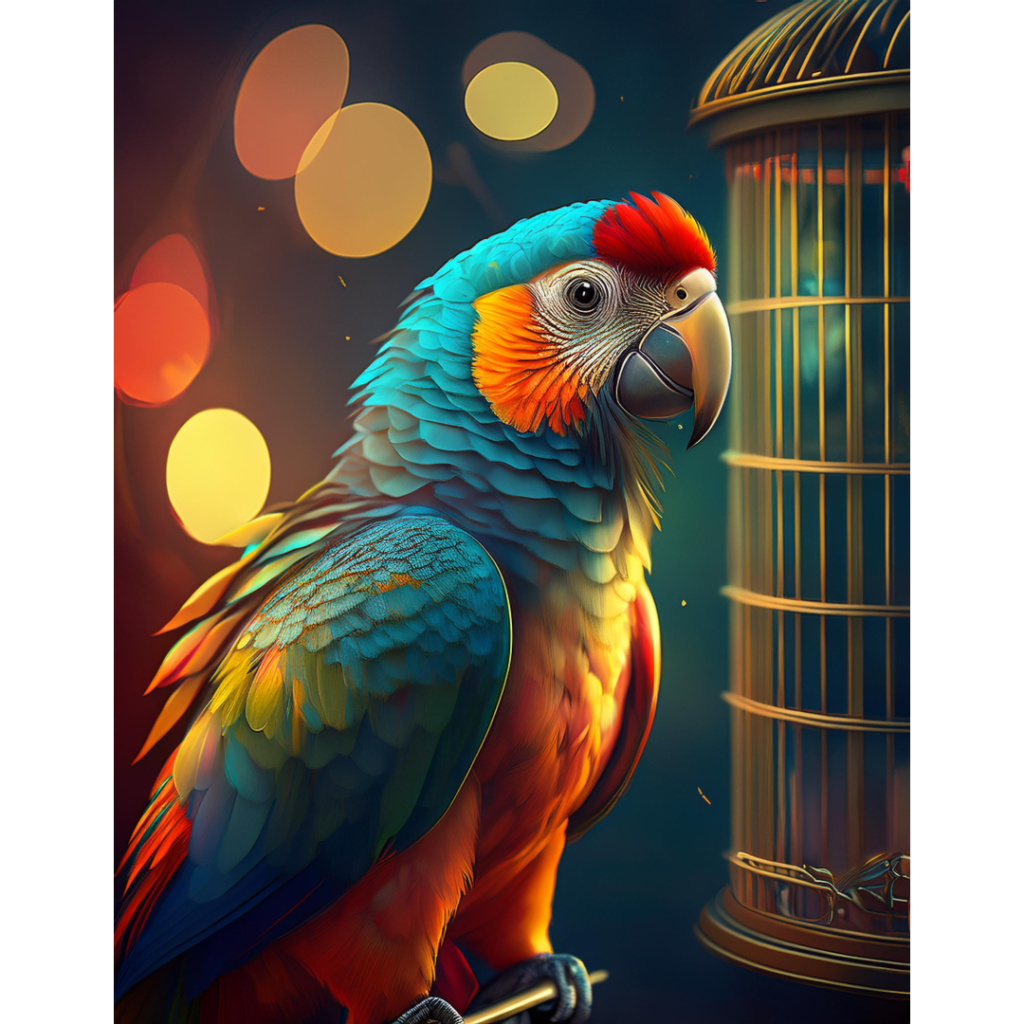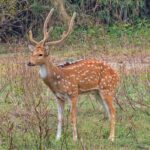Introduction
In a world where the boundaries between nature and human intervention are increasingly blurred, the sight of a parrot in a cage can evoke a myriad of emotions. Recently, I captured a photograph of a vibrant parrot confined within the bars of a cage. The image, though visually striking, left me pondering the deeper implications of captivity and freedom. This blog delves into the symbolism of the caged parrot, exploring themes of liberty, human responsibility, and the delicate balance between admiration and exploitation.

The Parrot: A Symbol of Nature’s Splendor
Parrots are among the most colorful and intelligent creatures on our planet. Known for their ability to mimic human speech, these birds have fascinated humans for centuries. Their vibrant plumage and playful demeanor make them a favorite among bird enthusiasts. However, their popularity has also led to their exploitation, with many parrots being captured and sold as pets.
In my photograph, the parrot’s feathers are a riot of colors emerald greens, fiery reds, and sunny yellows creating a stark contrast against the dull, metallic bars of the cage. The bird’s eyes, though bright, seem to hold a hint of melancholy, as if yearning for the open skies. This juxtaposition of beauty and confinement is a powerful reminder of the complex relationship between humans and nature.
The Cage : A Metaphor for Human Control
The cage, in this context, is more than just a physical structure; it is a metaphor for human control over nature. For centuries, humans have sought to dominate the natural world, often at the expense of the very creatures we admire. The caged parrot symbolizes this desire to possess and control, to bring a piece of the wild into our homes.
But at what cost? While the parrot in the cage may be safe from predators and harsh weather, it is deprived of its natural habitat and the freedom to fly. The cage, though it provides security, is ultimately a prison. It restricts the bird’s natural behaviors, such as foraging, socializing, and mating, leading to a life that is far removed from what nature intended.
The Ethical Dilemma: To Cage or Not to Cage?
The ethical implications of keeping parrots—or any wild animal—in captivity are complex. On one hand, captivity can protect endangered species from extinction. Breeding programs in zoos and sanctuaries have helped revive populations of several endangered birds, including some species of parrots. In these controlled environments, birds are safe from poaching, habitat destruction, and other threats.
On the other hand, captivity often comes at a significant cost to the animal’s well-being. Parrots are highly social and intelligent creatures that require mental stimulation and social interaction. In a cage, they may suffer from boredom, stress, and loneliness, leading to behavioral issues such as feather plucking and self-mutilation.
The ethical dilemma, therefore, lies in finding a balance between conservation and animal welfare. While captivity can serve as a means of protection, it should not come at the expense of the animal’s quality of life. As humans, we have a responsibility to ensure that our actions do not harm the very creatures we seek to protect.
The Parrot’s Perspective: A Life Behind Bars
Imagine, for a moment, what life might be like for the parrot in the cage. Once a free spirit, soaring through the treetops and communicating with its flock, it now finds itself confined to a small space, dependent on humans for food and water. The world outside the cage is a distant memory, replaced by the monotonous routine of captivity.
For the parrot, the cage is not just a physical barrier; it is a psychological one. The bird’s natural instincts to fly, to explore, to socialize are stifled, leading to a sense of frustration and helplessness. While some parrots may adapt to life in captivity, others may never fully adjust, their spirits broken by the loss of freedom.
This viewpoint encourages us to rethink our connection with nature. Are we, as humans, justified in keeping wild animals in captivity for our own enjoyment? Or should we strive to create a world where animals can live freely, without the constraints of cages and enclosures?
The Human Connection: A Shared Responsibility
The caged parrot is not just a symbol of captivity; it is also a reflection of our own humanity. As the dominant species on this planet, we have the power to shape the world around us. With this power comes a great responsibility—to protect and preserve the natural world, rather than exploit it for our own gain.
In the case of the parrot, this responsibility means advocating for ethical treatment of animals, supporting conservation efforts, and making informed choices about pet ownership. It means recognizing that our actions have consequences, and that we have a duty to ensure the well-being of all living creatures.
Conclusion : A Call to Action
The photograph of the parrot in the cage is a poignant reminder of the delicate balance between admiration and exploitation. While the bird’s beauty is undeniable, its captivity raises important questions about our relationship with nature. As we move forward, it is crucial that we strive to create a world where animals can thrive in their natural habitats, free from the constraints of cages and human control.
Let this image serve as a call to action—a reminder that we have the power to make a difference. By advocating for ethical treatment of animals, supporting conservation efforts, and making informed choices, we can help ensure a brighter future for all living creatures. The parrot in the cage may be a symbol of captivity, but it can also be a symbol of hope—a hope that one day, all creatures will be free to soar.
Final Thoughts
As I reflect on the photograph of the caged parrot, I am reminded of the words of the renowned naturalist John Muir When one pulls at a single thread in nature, they discover it is woven into the fabric of the entire world. The parrot in the cage is not a solitary being; it is part of a vast ecosystem, intricately connected to all living things. By recognizing this interconnectedness, we can begin to foster a deeper respect for the natural world and all its inhabitants.
In the end, the caged parrot is more than just a subject of a photograph; it is a mirror reflecting our own humanity. It challenges us to confront our desires, our responsibilities, and our impact on the world around us. And in doing so, it invites us to envision a future where freedom is not a privilege, but a right—for all creatures, great and small.



